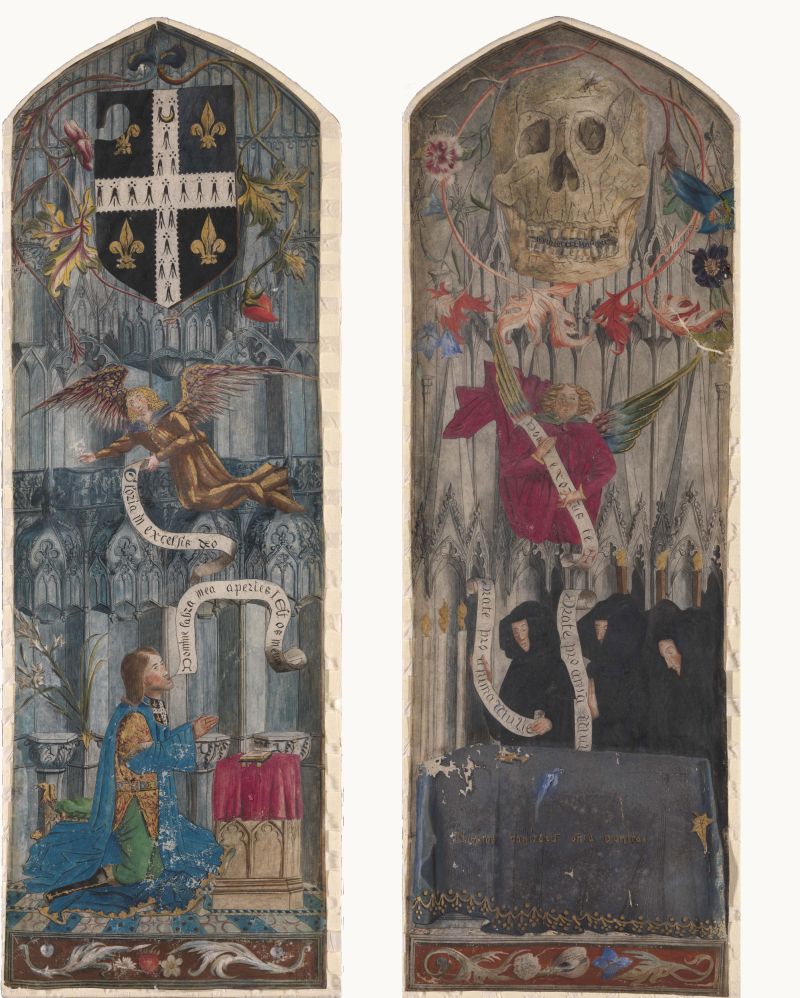
William John Bankes
1786–1855
Two Wings of an Altarpiece
Watercolour and gouache on vellum
22 ¼ x 7 ½ inches, 565 x 188 mm
Painted circa 1804
We are really excited that the National Trust have purchased a remarkable pair of panels made by the great connoisseur and collector William Bankes for Kingston Lacy in Dorset. The panels were made by Bankes to decorate the Gothic ‘chapel’ he created in his set of rooms at Trinity College, Cambridge in 1803. Bankes was the richest and most exuberant of a remarkable group of undergraduates, which included George Gordon, Lord Byron. Bankes would go on to become one of the greatest art collectors of the first quarter of the nineteenth century it is therefore fitting that these panels should have been acquired by the Trust for Bankes’s family home, Kingston Lacy in Dorset.
Bankes’s ‘Chapel’ was famous in his life time. Writing in 1822, the year Bankes had been elected MP for Cambridge University - the great Trinity scientist Adam Sedgwick noted:
'Our representative Bankes is certainly a very extraordinary man, and possesses a wonderful fund of entertaining anecdotes. When an undergraduate he was half suspected of being a Papist: and he almost frightened Dr Ramsden to death, by building in his rooms an altar at which he daily burned incense, and frequently had the singing-boys dressed in their surplices to chant services.'

Ceiling of Bankes’s Gothic ‘Chapel’, Trinity College, Cambridge, showing the Bankes coat of arms prominently in the centre.
According to Byron, Bankes was fond of ‘profane jests’ and this certainly seems to explain the spirit of Bankes’s rooms with their painted decoration, incense, choir boys in costume and these exuberant altar panels. Bankes’s sense of the theatrical was legendary and much commented upon by contemporaries, the poet Thomas Moore noted that having: ‘fitted up some of his rooms in imitation of a Catholic Chapel and used to have the Singing Boys in dress suitable to the occasion, come and sing there for him, and it was constantly asked 'what the devil does Mr Bankes do with those singing boys?’
The iconography of the panels is completely in-tune with both Bankes’s scholarly interests and his sense of humour. The left hand-panel comprises a kneeling knight, in a gilded tunic with the Bankes coat of arms hanging round his neck. The right-hand panel points to the mood and interpretation of the work. The hooded, black-cloaked mourners holding tall candles arranged around a coffin, draped in a black pall, the skull and inscriptions suggest the panels represent the ultimate ‘profane jest’, acting as a monument to Bankes’s own death. In the context of Bankes’s role as the ‘father of all mischief’, as Byron called him, and the elaborate setting of the present panels in his rooms at university, they should be read as a joke, perhaps underscoring Bankes’s obvious lack of virtues. They will make a fantastic addition to the collections at Kingston Lacy and underline Bankes’s precautious interest in the arts.